JUST FOR ZINFANDEL LOVERS
Georg Riedel does not have an ordinary palate. So what’s new? Here’s a man who has, virtually single-handedly, revolutionized the way we think about glassware in our homes and restaurants. Thanks to Riedel, the impact of size and shape of a wine glass on the appreciation of any given wine is not only universally accepted, it is far better understood. He’s brought science to an art, and enhanced it immensely.
It is always a treat when Mr. Riedel personally presents his case for grape or regional specific wine glasses. I remember well one remarkable presentation by Riedel at the Zinfandel Advocates & Producers’ 2012 trade event, when he demonstrated why a narrow 14-ounce glass—essentially, Riedel Vinum’s Zinfandel/Riesling glass—more effectively expresses Zinfandel’s natural berry/cherry varietal character.
However, since 2010 I have lived in Lodi, California, where Zinfandel is a big part of our everyday diet. Therefore, my perspective is slightly different—my grasp of Zinfandel undoubtedly more delineated than Mr. Riedel's. Mr. Riedel made his case, though, by pouring the exact same Zinfandel in seven different wine glasses, asking a group of sommeliers (there at my invitation) and winemakers specializing in Zinfandel to vote on their preferences. A total of about a two dozen wine professionals participated in this taste-test.
Mr. Riedel's recommended glass for Zinfandel turned out to be one of the two top choices of the winemakers and sommeliers. It was not my personal favorite, though, precisely because of the way the glass's narrow tulip shape funnels the fruit aromas of Zinfandel to the nose, which significantly accentuates the sweet or "jammy" berry qualities of the varietal.
My preferred glass was one that was similar to Riedel's Cabernet/Merlot glass, which is another narrow tulip shape but with a larger capacity—21 ounces, as opposed to the 14 ounces of the Zinfandel glass. I found that a larger glass furnishes more surface area to swirl a wine and collect aromatic vapors beneath the curved rim. The advantage of increased surface is that it allows a Zinfandel to express more nuances, going beyond a simple, berry-like fruitiness. Personally, I do not judge a Zinfandel simply on the basis of varietal fruit intensity. The most interesting, terroir focused Zinfandels, in fact, also have some degree of spice (such as peppercorn and clove), earthy aromas (such as loam or mushrooms), and reflect more subtle or "neutral" use of oak barrel aging (minimizing vanilla or toast in the nose)—nuances that can get buried under a rush of fruit-dominant aromas when pushed out of a smaller, 14-ounce Zinfandel glass.
But here's the thing: When I normally evaluate Zinfandels on a professional basis—at home, when going through numerous bottlings—I routinely pull out Riedel's 14-ounce glass. Why? Because it gives me an "industry standard" by which to make sensory assessments. But if I'm having an interesting Zinfandel with dinner, I'll reach for a larger sized tulip, which is more likely to give a rounder taste and the expanded "nose" I enjoy.
Riedel recommends the 14-ounce tulip for Riesling and Chianti for the exact same reason it works for Zinfandel: These are wines that are often judged by optimal fruit intensity—the more intense and focused the perception of fruit, the higher the perception of "quality." Because its narrow shape focuses on fresh fruit fragrances, Riedel's Zinfandel glass is also ideal for almost all dry rosés and whites, especially Sauvignon Blanc, Pinot Gris/Pinot Grigio, and Albariño—the latter, a varietal that has become practically an everyday wine in Lodi, it grows so well there.
I have also enjoyed Tempranillo based reds in the Zinfandel glass, although Riedel himself recommends a considerably larger glass for this varietal. I would suggest that the narrow 14-ounce glass is ideal for American styles of Tempranillo—as opposed to the earthier, and typically oakier, reds of Spain's Rioja, Toro or Ribera del Duero regions—because the strong suit of Tempranillo grown on the West Coast is bright, often teeming red fruit qualities (cherry, strawberry, pomegranate, licorice, etc.) with just smidgens of dusty earthiness, all of which show well in a smallish, narrow glass.
WINE GLASS SHOWDOWN AT HOSPICE DU RHÔNE
For the benefit of a much larger audience (at least 500 wine enthusiasts in one room) at the 2009 Hospice du Rhône festival in Paso Robles, Riedel presented four different wine glasses with three different Syrah-based red wines. At that event, I found that the glass that Riedel strongly declared to be the “best” for each wine was, in fact, the glass that I personally favored the least. Which is okay, since I also wrote down one of Riedel’s comments, which is that wine glasses merely “translate messages of wine to our private senses.”
My private senses clearly differ from Mr. Riedel’s private senses. Mostly because his palate seems to prioritize fruit, tannin as well as oak sensations even over perceptions related to concepts such as balance, complexity and layering; whereas I prefer wine glasses that emphasize less fruit, less tannin, a little more aromatic nuance and a little more sense of grace. This, mind you, is simply an observation of, if anything, the extremes of my own predilections. Your preferences, as well as that of your guests, are also likely to vary.
Still, a wily sommelier can utilize varying glass shapes and sizes to achieve preferred sensations. You can choose one glass if you are aiming to emphasize a particular wine's intensity of fruit, and a different glass to emphasize a particular wine's more nuanced complexities⏤both of which can be underlined further by ingredients and preparations of dishes. Choice of glass can be just another tool.
From time to time, I go back to my notes taken at Riedel’s 2009 Hospice du Rhône presentation precisely because it amounts to an interesting study of how glass shapes and sizes alter the perception of wines. And in doing so—that is, finding glasses that emphasize fruit aroma, or more non-fruit aromas, or sensory qualities like tannin, acid, sweetness, alcohol, oak, more balance, less balance, hard textures, soft textures, et al.—you also end up discovering how individualistic perceptions of “quality” really are.
The wines tasted in Paso Robles:
2005 Guigal, Saint Joseph
2005 Elderton, Ashmead Family Barossa Valley Shiraz
2007 Miner Family, Stagecoach Vineyard Napa Valley La Diligence Syrah
And my notes on each of the four glasses proffered by Mr. Riedel:
Riedel Restaurant Oregon Pinot Noir (24.75 ounces)
I presume that Riedel chose to present this traditional, large, bowl shaped glass—differing slightly from Riedel’s classic Burgundy glasses in that the rim is flared slightly outwards at the top—in order to demonstrate this shape’s slight disadvantage when compared to glasses actually designed for Syrah-based reds. Glasses designed for Pinot Noir carry a more voluminous inner surface and head space to emphasize the fragrance of the grape, and the flared rim of this particular rendering also does a fine job of allowing wine to flow from the tip of the tongue towards the sides, thus emphasizing the round, sumptuous fruitiness of Pinot Noir based reds (in this case, to the benefit of specifically Oregon grown Pinot Noirs).
All the same, I especially liked the way the Restaurant Oregon Pinot Noir glass emphasized the bright, youthful fruitiness of Guigal’s Saint Joseph, with its modicum of tannin in comparison with the tannin levels of the other two wines. It was my favorite wine for this glass. Riedel, however, much preferred his smaller (20.75 oz.), more narrowly rimmed Sommeliers Hermitage glass for the Saint Joseph—a combination that I found brought out the astringent quality of the Saint Joseph’s young tannin, while smothering the fruit-forward qualities that the Oregon Pinot Noir glass seemed to bring out.
Riedel Sommeliers Hermitage (20.75 ounces)
Retailing for around $90 a stem, this mouth-blown, 24% lead crystal glass represents the opposite end of an extreme, compared to the less brilliant but more durable, lead free, machine-made (and more economically priced) Restaurant Oregon Pinot Noir glass. Described by Riedel as one of his “masterpieces,” the Sommeliers Hermitage glass is orbular at the center, but only slightly rounder than a traditional tulip. These specs seem to focus the nose on the classic, earthen, “roasted” aromas of Northern Rhône reds; although its smaller rim circumference also delivers wine to the middle and center of the tongue, almost brutally emphasizing both textures and tannins.
While drawing attention to gripping tannin and generous oak qualities, this glass at least seemed to bring focus and something of a profundity to the Miner La Diligence—a phenomenally black, viscous Syrah, bursting at the seams with tannin, smoky oak and sweetly concentrated fruit. That is, it made the Miner taste “important.” I was not, however, as enamored as Mr. Riedel by the taste of the soft, easy Saint Joseph, nor with the bigger, riper, oak laden Elderton Shiraz, in this glass.
In fact, the Sommeliers Hermitage was my least favorite glass for the Elderton, as it seemed to push the hard oak and tannin in front of the wine’s ripe, meaty qualities. My favorite glass for the Elderton was the taller, more voluminous (by over 3 ounces) Flow Syrah; which, while not nearly as fine a glass, at least seemed to furnish enough surface area to “plush” out the Elderton’s fruit, bringing it into balance with the wine’s aggressive oak, tannin and high alcohol structure.
Riedel Vinum Extreme Shiraz/Syrah (22.25 ounces)
For each of the three wines, this machine blown, 24% lead crystal glass, widened towards the bottom of the bowl by a suggestive “diamond” profile, ended up as my third choice. Not my last choice, but among my least preferred. Like that of the Sommeliers Hermitage, the narrow rim of the Vinum Extreme Shiraz/Syrah emphasizes textures in a Syrah that may be meaty or velvety, or else tough and hard. In other words, it can bring out the best and worst in even a great Syrah.
For example, the Vinum Extreme Shiraz/Syrah seemed to sweeten the aggressive oak aroma and tannin sensation in the Elderton—qualities I strongly feel are better left understated, whenever possible, as with most any wine. With the Miner Syrah—the thickest, most tannic and oakiest of the three wines—the shape of this glass seemed to dry out the fruit, precipitating a sharper than necessary finish.
Riedel Flow Syrah (23-5/8 ounces)
This is a tall (10 inches), nearly 24-ounce, yet somewhat narrow, thicker stemmed, lead-free glass, designed to be sturdy enough for everyday usage—especially for enjoying more aggressive Australian or Californian Syrahs. The inner-surface volume of the Flow Syrah glass seemed to bring the fruit of the Elderton Shiraz into ample enough proportion within the scope of its generous oak and tannin. However, with the powerful, complex, toasty Miner La Diligence, the Flow Syrah seemed too big, almost cavernous; causing the Miner’s intense qualities to soar out of control, sticking out all over like bad morning hair.
Strangely enough, I found the Miner Syrah to be more appealing with the two glasses of nearly opposite size and shape: The Burgundian shaped Restaurant Oregon Pinot Noir (this glass’s flared rim allowed the Miner to spread width-wise across the palate, emphasizing the wine’s luscious fruitiness); as well as the more compact, tighter rimmed Sommeliers Hermitage. Conclusion: This glass is perhaps best suited not so much for Syrah per se, but for consumers who like a Syrah (and especially an Australian Shiraz) that comes across as “big” in raw fruit, tannin, alcohol, and oak; with maybe a little less regard for senses of balance, subtlety or harmony.
No matter how you conceive of Riedel’s magnificent variety of wine glasses, one thing you always experience: Sensory variations, from elusive or illusory, abrasive to sumptuous, startling to amazing, and often surprising. What better tools to vary tastes at the table and, ultimately, increase a sommelier’s bottom line?
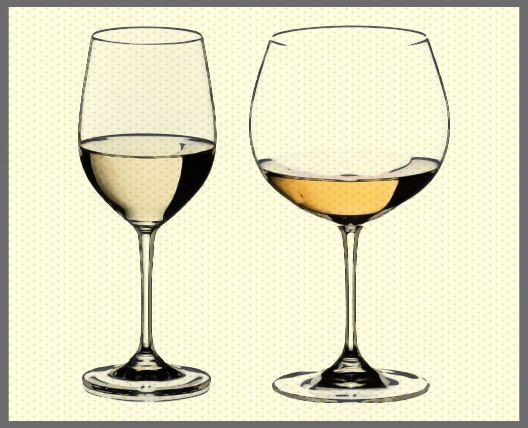
CONTRASTING CHARDONNAY GLASSES
Riedel Vinum Chardonnay/Viognier (12.3 ounces, 7.79 inches tall)
Riedel Oaked Chardonnay/Montrachet (21.1 ounces, 7.5 inches tall)
Is there such a thing as an ideal glass for Chardonnay? Riedel's Vinum Chardonnay/Viognier tulip is, if anything, particularly ideal for American style Chardonnays, which are pungent in fruit qualities and often barrel fermented and aged; meaning, they have a significant amount oak qualities in the aroma and flavor which help boost the varietal fruit character of the wine.
Many Chardonnay lovers, however, are aware of the fact that the grape originated somewhere in the proximity of France's Burgundy region, and Burgundy produces a slightly different style of Chardonnay because its climate and soils are different from most of California. In Burgundy, Chardonnay-based whites grown in Burgundy tend to be more citrusy (particularly, lemon-like) than Californian Chardonnays. They don't necessarily have less oak intensity—the French, at least in the Côte de Beaune region, are just as big believers in the value of oak as Californians (most of whom, after all, are merely imitating the French)—but Burgundian styles also have more earth or mineral-related aromas and flavors, besides the fact that they tend to be a tad lighter (closer to 13% alcohol, rather than the 14%-15% alcohol levels of typical California Chardonnays), more acid driven, and generally less overtly fruity.
Therefore, lovers of white Burgundy usually look for slightly different sensory attributes in their Chardonnays; qualities for which the larger, wider shaped Vinum Chardonnay/Montrachet glass was designed by Riedel. The markedly more voluminous shape of this rounded glass emphasizes crisper textures and mineral nuances in Chardonnay based whites, as opposed to the sheer richness of fruit and the opulent texturing associated with most California styles.
But can opulent American style Chardonnays be appreciated in the bowl shaped "Burgundy" glass? Sure, why not? But it will not magically conjure up citrusy scents, mineral nuances and more precise, crisper texturing. In a white Burgundy style glass, most rich, oaky California Chardonnays will simply taste oakier and have more pronounced fruitiness.
There are, however, a few American Chardonnays that are crisp enough in acidity to age for as long as 10 or more years. The Riedel Montrachet glass is ideal for bringing out the nuances of a gracefully matured Chardonnay, from any country
Does this mean you should have a different glass for every style of Chardonnay grown in the world? No. Even wine geeks and sommeliers don't usually go that far. All the same, the shape of wine glasses matter, even if this is more of an intellectual pursuit, rather than practicality. Fine wine, after all, is something that appeals as much to the intellect as it does to the senses. Pick the glass that meets your needs and preferences.
FURTHER ADVENTURES WITH THE RIEDEL VINUM SERIES
In the following comparisons of wine glass shapes, I am citing just a few of the basic profiles designed by Riedel; particularly those in this company's Vinum series, which are machine-made wine glasses that retain the fine feel of lead-free crystal. There are many other brands producing excellent wine glasses that are most certainly comparable to Riedels in terms of quality, size and shape, and not always as expensive. For the sake of discussion, however, I will cite sensory ramifications of just few of Riedel's basic models to address the pros and cons of the variations, and you can take it from there.
Riedel Vinum Cabernet/Merlot (21 ounces, 9.25 inches tall)
The big difference between Riedel's classic Cabernet/Merlot glass and its recommended Zinfandel glass is size: The Cabernet/Merlot glass's 21-ounce capacity, as opposed to the Zinfandel glass's 14 ounces; plus the Cabernet/Merlot's 9.25-inch height compared to the Zinfandel's 8.25 inches. The extra surface area in the glass allows for more aromatic nuances to emerge in the aromas once a wine is swirled, which is especially important for red wines made from Cabernet Sauvignon and Merlot because they tend to have more color and tannin content, adding to a greater sense of body or weight to these wines, which can diminish perception of aromas if tasted from a smaller glass.
In smaller glasses such as the Zinfandel model, the tannin content of a Cabernet Sauvignon can also come across as rough, drying or bitter. Because the human sensory apparatus receives signals sent to the nose as well as to the tongue in syncretic fashion (that is, the tongue can "perceive" aromas, while the nose can "taste" sensations such as hot, cold, sweet or sour), by expanding aromatic perception, the larger surface area of the 21-ounce tulip gives a typical Cabernet Sauvignon a physically smoother, better balanced feel. In a somewhat similar way, a dark colored Merlot comes across lusher, more svelte and velvety in a 21-ounce tulip, which exactly are the qualities you look for in a Merlot.
This glass is also ideal for red wines that have earthy, or non-fruit, nuances. Pronounced earthiness, for instance, is very much a part of Cabernet Sauvignon-dominant reds grown in France's Bordeaux region. It is also a positive attribute of Tempranillo-based red wines grown in Spain. Therefore, I have always enjoyed Tempranillo based reds from Spain in this glass, although I have found that the smaller Zinfandel glass works just as well for the more fruit-driven styles of American grown Tempranillo.
In reverse, how does the Cabernet/Merlot glass work for California Zinfandel? As previously mentioned, very well, thank you. More and more Zinfandels are being crafted as vineyard-designates, blended with zero Petite Sirah (thus, not stuffed with excess tannin and color), seeing less new oak, and are often native yeast fermented in order to focus more on terroir and less on standard commercial varietal expectations. Besides the grape's intrinsic pepperiness, earthy nuances are also not uncommon in these emerging styles—all qualities more likely to be perceived, thus better appreciated, in a 21-ounce Cabernet/Merlot glass than in a 14-ounce glass.
In similar fashion, the 21-ounce Cabernet/Merlot glass can also help to highlight the nuanced scents and earthy complexities distinguishing many of Tuscany's finer Sangiovese-based reds; particularly Brunello di Montalcino and Vino Nobile di Montepulciano. Ditto, the phenomenal combinations of earth, leather and fruit found in Provence's red Bandol. If you are inclined to spend $50 to $100 for these types of imports, you may as well equip yourself with a wine glass that gives you a higher percentage chance of experiencing all the grand attributes of these wines. This is why the size and shape of the classic Cabernet/Merlot glass will always be indispensable.
Riedel Vinum Pinot Noir/Burgundy (24.75 ounces, 8.25 inches tall)
One of the joys for many a red wine lover is tasting Pinot Noir in the classic "Burgundy" shaped bowl. Riedel Vinum's model is par for the course for this traditional wine glass: A wide, spacious 24.75-ounce capacity, standing 8.25 inches tall.
The rounded shape and broad surface area of a classic Pinot Noir shape is ideal because this type of varietal wine is appreciated more for its fruit fragrance, and a gentle, soft tannin feel on the palate that suggests silk or velvet texturing. This is different from what many wine lovers look for in, say, a Cabernet Sauvignon, appreciated all the more for aggressive tannin and a dense, muscular feel.
Although scientists now say that taste buds sensitive to sensations such as sweetness and bitterness are dispersed throughout the tongue, the significantly wider rim of a Pinot Noir glass does cause a wine to enter the palate closer to the tip of the tongue, which enhances the sensations of "sweet" fruit on the tongue. This perception is as much much psychological as physical: Sampling anything (foods or beverages, particularly when they're hot) closer to the tip of the tongue causes a momentary pause in the tasting mechanism, giving the brain an extra second to process sensations touching all parts of the tongue and triggering retronasal signals (identified as "flavors") sent to the nose. Consequently, sensations of sweetness, or fruit intensity in wines, can be perceived with more clarity.
This is in contrast to the narrower tulip shape of the classic Cabernet/Merlot glass, which drops a wine closer to the middle of the tongue, and naturally hastens swallowing while emphasizing the sensations of tannin and body. The entire idea is that Pinot Noir lovers prefer wines that taste light and delicate, whereas Cabernet Sauvignon lovers prefer a feeling of strength or brawniness—hence, the dramatically different glass shapes, serving the purpose of altering the perception process.
In fact, an interesting exercise is to compare the taste of a Cabernet Sauvignon as well as Pinot Noir in both a Cabernet/Merlot glass and a Pinot Noir/Burgundy glass. If the wines are true to type, a Cabernet Sauvignon tasted in a bowl-shaped glass will taste more diffused, or less focused and concentrated, than it would in a tulip. A Pinot Noir tasted in a Cabernet glass tends to lose a little bit of its fragrance and smooth, delicate feel, especially because its tannin level (while milder than in an average Cabernet Sauvignon) as well as sharpness of acidity become detrimentally accentuated in a Cabernet glass.
By the same token, if you want to "flatten" out the taste of a Cabernet Sauvignon that you think might find to be a little too "big," try it in a Pinot Noir glass. If you want to fill out and taste more of the tannin/acid edge in a Pinot Noir, drink it in a Cabernet glass. Negatives can be positives, and vice versa.
The Pinot Noir glass, in fact, is ideal for any red wine that emphasizes softer tannin and a more floral fragrance, especially when laced with red or blue berryish fruit. Therefore, among other types of French wines, the fruity, easy drinking red wines of Beaujolais taste amazing in this glass; the better ones (crus Beaujolais) become more layered and complex than when tasted in smaller tulips.
In Lodi, I often enjoy ancient vine (from plants over 100 years old) Cinsaut, Grenache and even Carignan in a Pinot Noir glass—the more nuanced, spice scented and/or earth toned the wine, the more you want to use a spacious sized bowl to coax out the subtleties. This, by the way, is contrary to Riedel's recommendations. But don't take Riedel's word, nor mine. You have to discover what's "right" for yourself.
Riedel Vinum Syrah/Shiraz/Tempranillo (24.69 ounces, 9.29 inches tall)
This glass shape is almost peculiar to Riedel, among all the other popular manufacturers of wine glasses. The wine glass's unusual feature is its long, tall (9.29 inches), vertical tulip shape that is as voluminous in inner surface capacity as Riedel's bowl-shaped Pinot Noir glass; 24.69 ounces, in comparison to the Vinum Pinot Noir model's 24.75 ounces. Keep in mind that a bottle of wine contains 25.4 ounces. You can fit almost an entire bottle into one of these glasses.
This glass could also be summarized as a "Rhône" varietal glass—ideal for Syrah, as well as many of the blends of Syrah with Mourvèdre, Grenache and/or Carignan—if not for the fact that Riedel also favors this exact shape for the Tempranillo based reds. This shape is also ideal for Petite Sirah (i.e., Durif)—not technically a Rhône Valley cultivar, but a crossing of Syrah and Peloursin—which makes sense in theory as well as practice because, like Syrah, the voluminous varietal character of Petite Sirah can be enhanced by a glass with an extra-large yet narrow volume of inner surface.
Speaking from firsthand experience, however, I'd offer this caveat: This glass is so big, many of these red wines actually get lost in its cavernous interior. That is to say, rather than coming across as focused or concentrated, aromas can soar out of control, making perception elusive. Even if successful insofar as delivering aromatic intensity to the nose, a dark, vividly perfumed, high tannin Syrah can come across as rough and jagged when tasted on the palate. In other words, this glass can bring out the best and worse of Rhône style reds. Whenever I experience something to this effect when tasting from this glass, I simply switch to a smaller tulip, such as a classic Cabernet/Merlot glass. That's the beauty of having multiple glasses on hand.
All the same, the Syrah/Shiraz/Tempranillo glass has a way of enhancing the deep, rich, ripe and opulent styles of Mediterranean reds; particularly those from France's Rhône Valley or Spain's Ribera del Duero and Toro regions. I have never, however, favored this glass for rounder, paler, bouquet scented styles of Gran Reserva Rioja, preferring the slightly smaller (by nearly 4 ounces) Cabernet/Merlot tulip for these mature styles of Tempranillo. Smaller, narrower glasses bring more focus and delineation to reds aged long in oak.
There are, however, other varietals grown on the West Coast (as well as Texas!) that can do very well in this oversized tulip: Tannat, Alicante Bouschet, Teroldego, Barbera, Nero d'Avola, Aglianico, Dolcetto, Zweigelt, Dornfelder, Charbono, and even the occasional Pinotage—all examples of reds with deep enough colors, intense enough aromas and dense enough palate-feels to find a sense of focus and scale in a super-voluminous glass.
In fact, if you have a penchant for any kind of dark, concentrated, hefty style of red wine, the Syrah/Shiraz/Tempranillo glass may very well become your go-to. At certain times in my life, it's worked for me. I've often sat a table, contemplating life with an ample wine, muttering brainlessly to myself, "Oh, I like a big glass!"





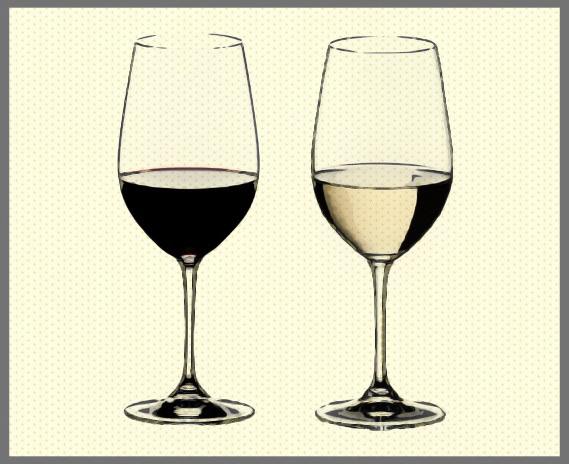

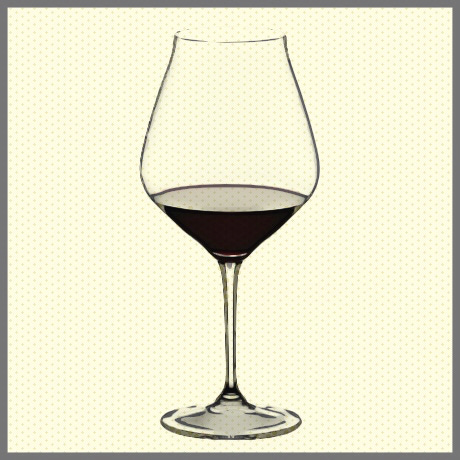
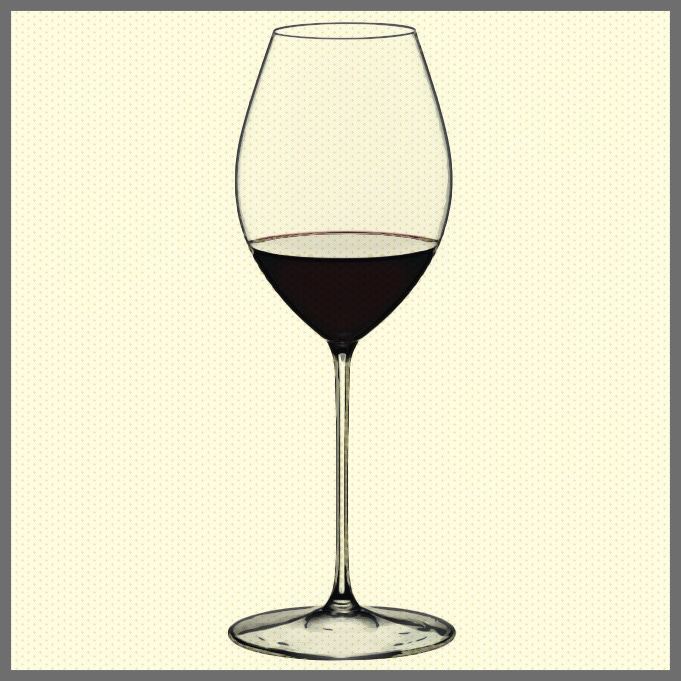
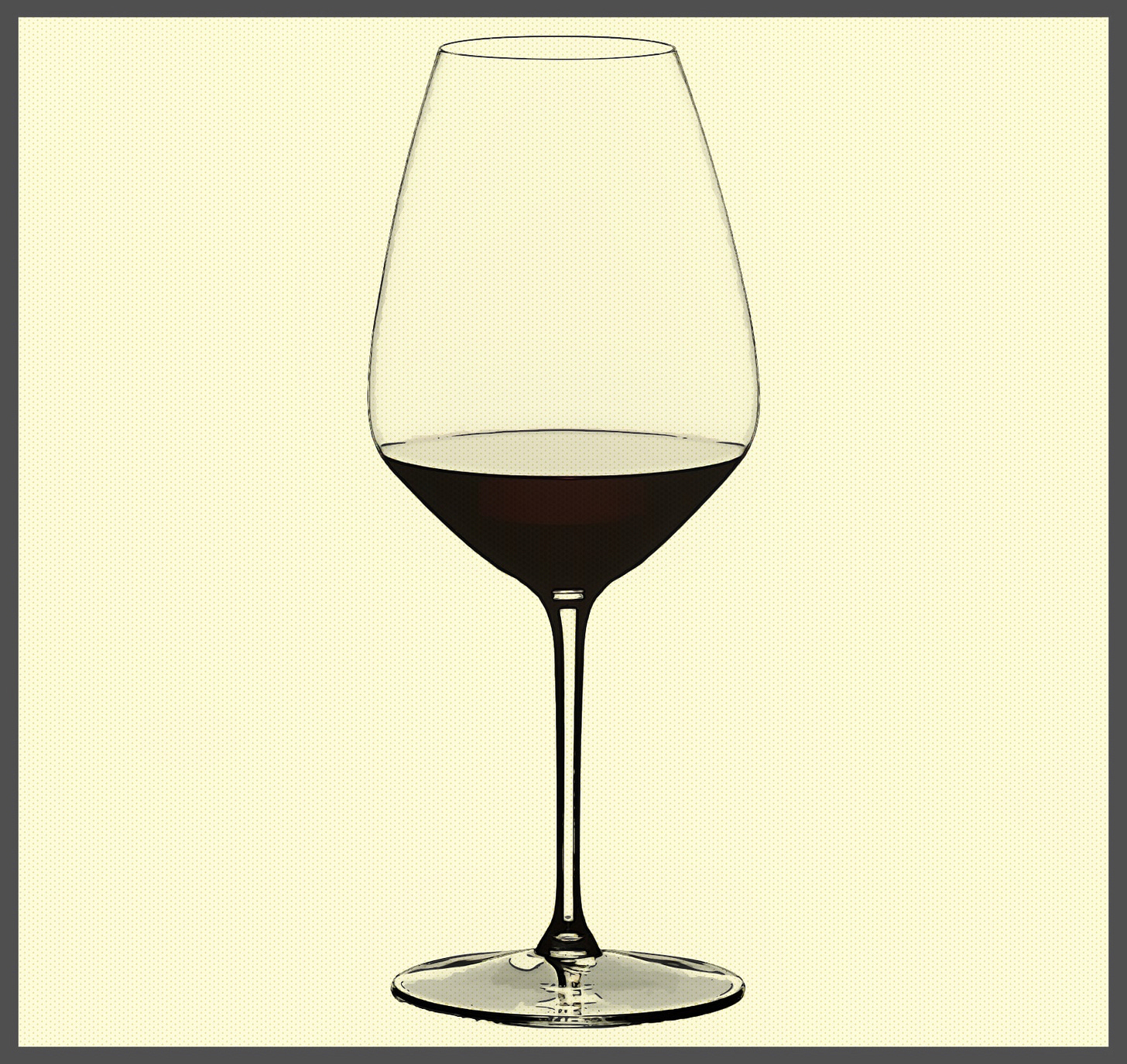
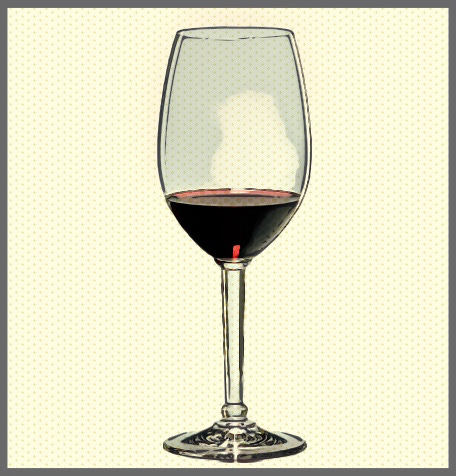
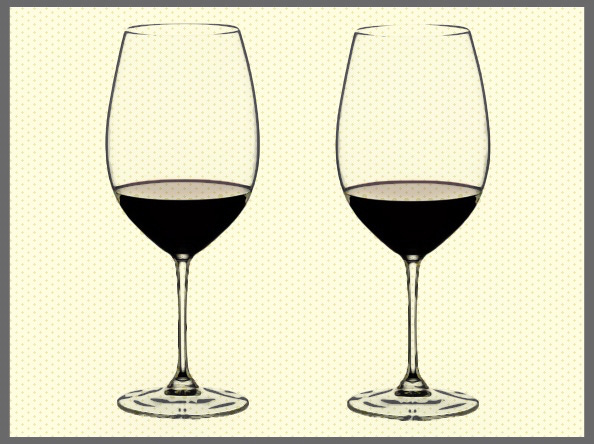
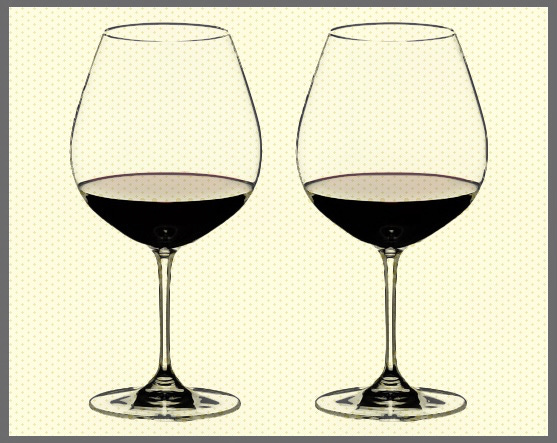

Great piece. I had the pleasure of doing a tasting with Georg way back in the day. Fascinating!
Fascinating article. Thanks for sharing, Randy!